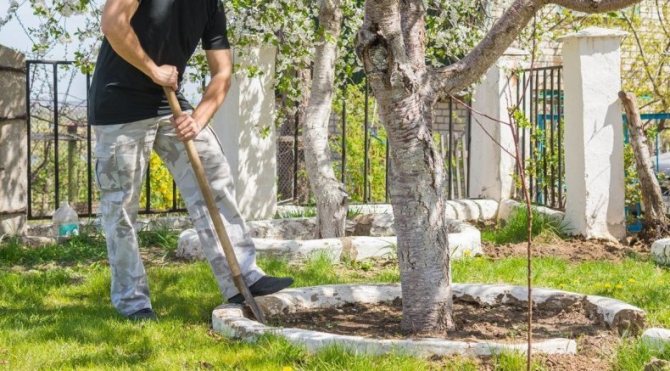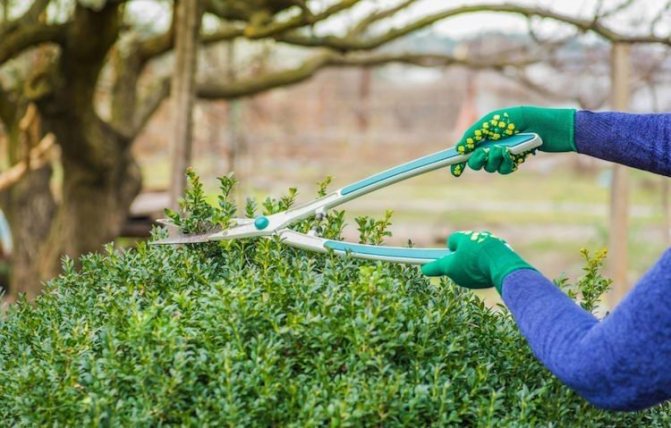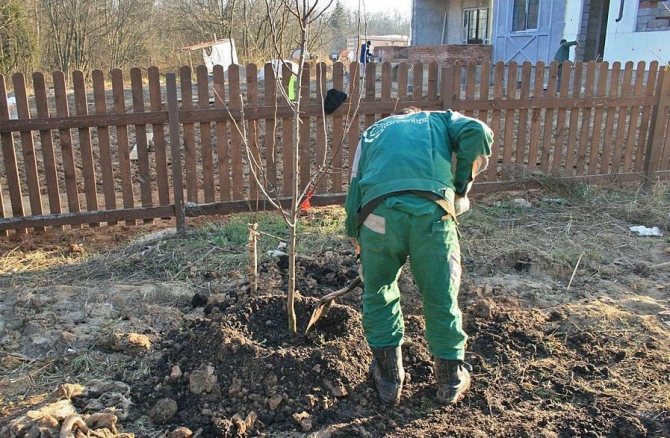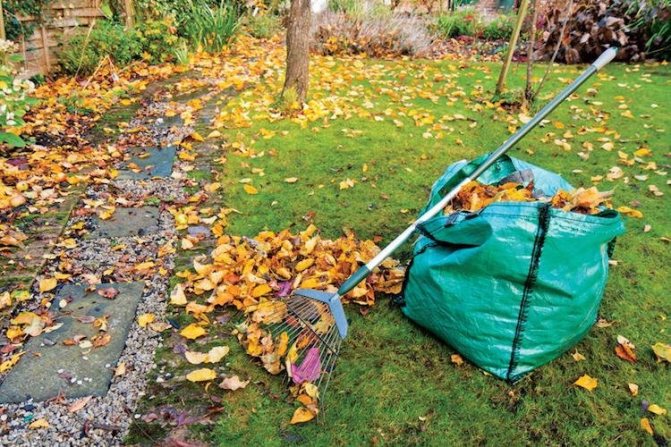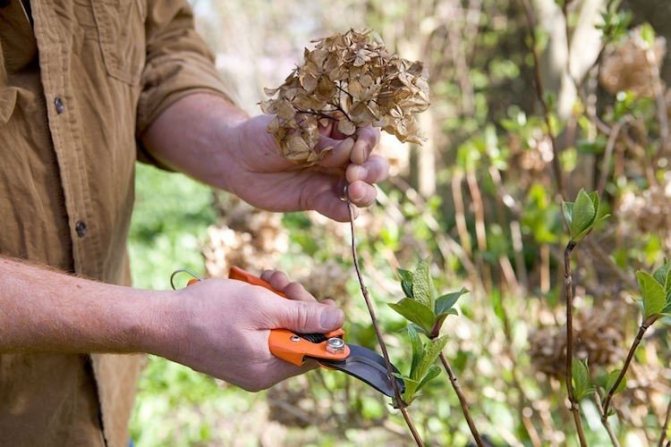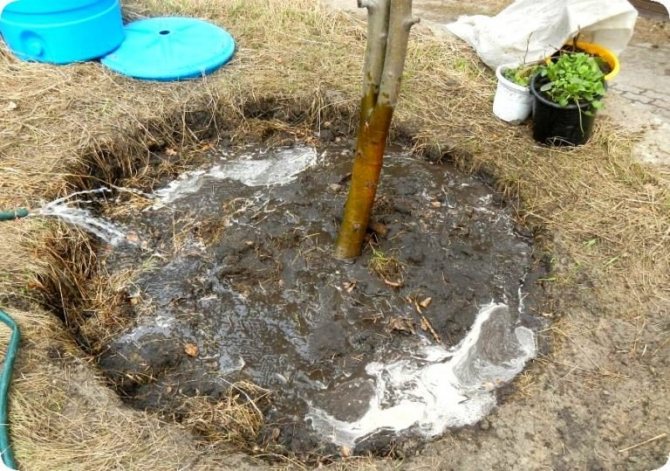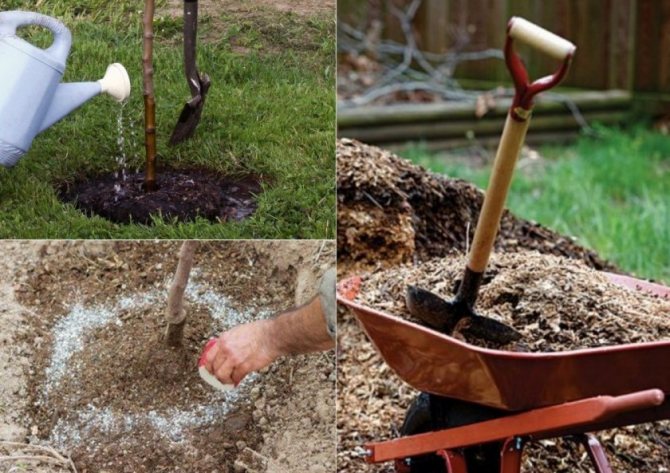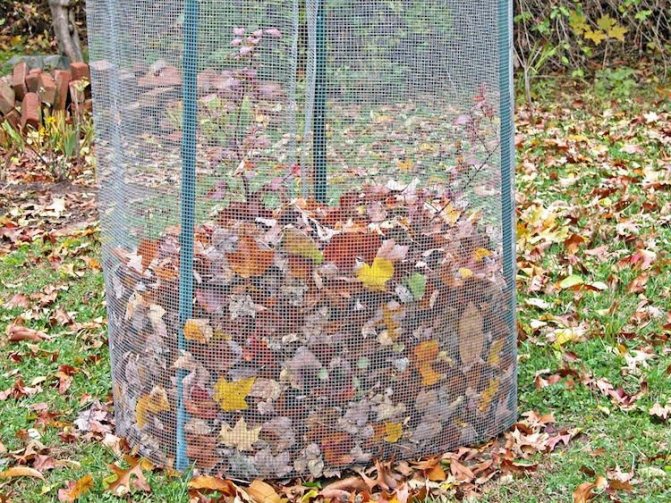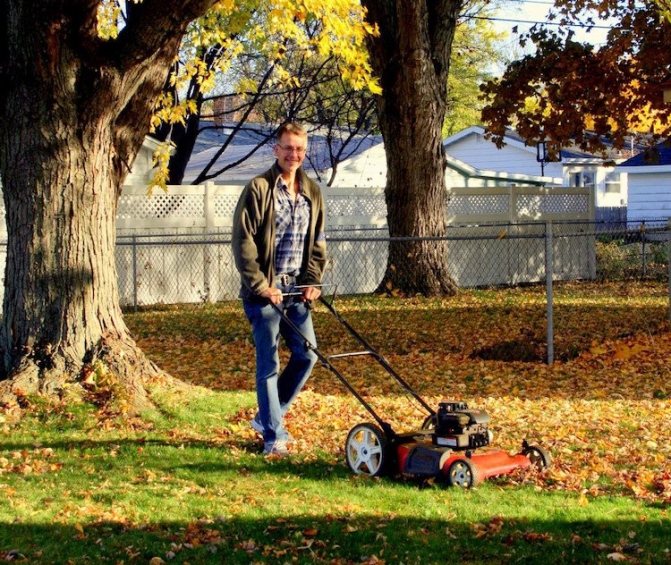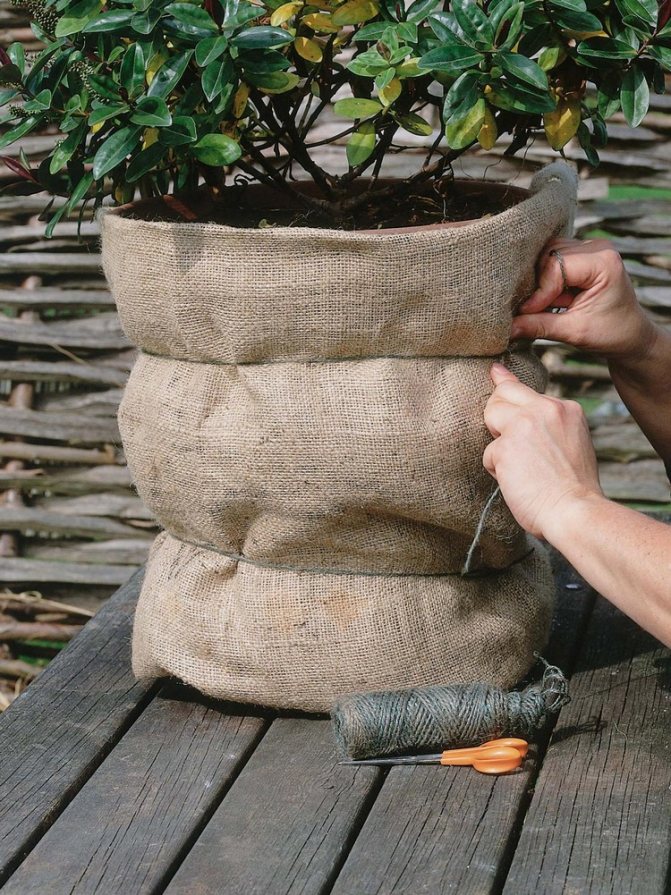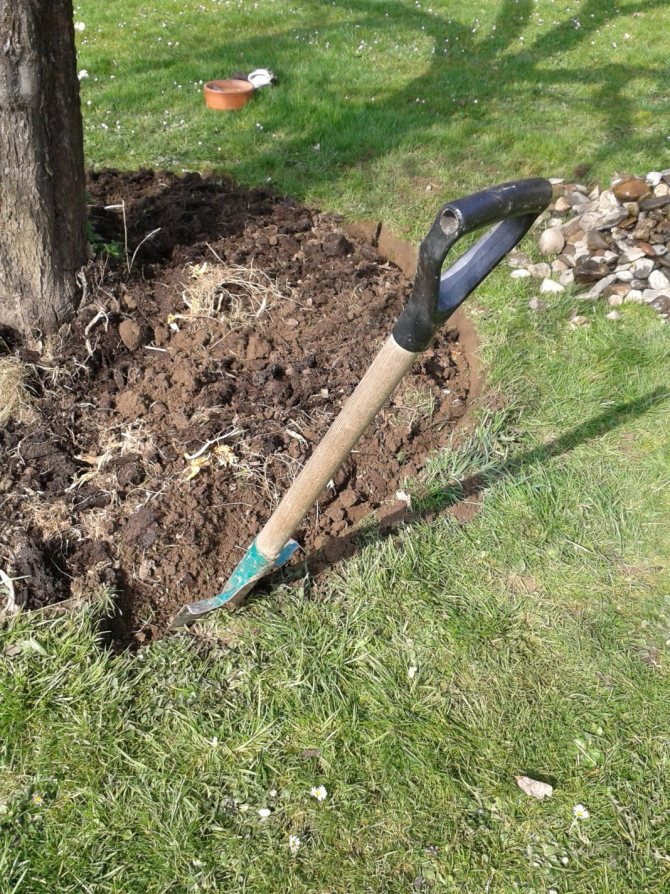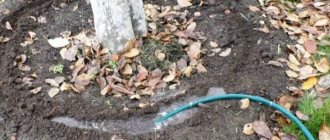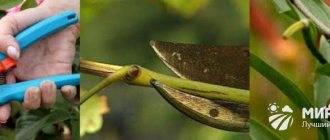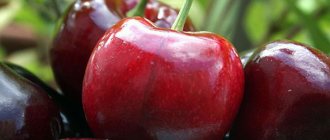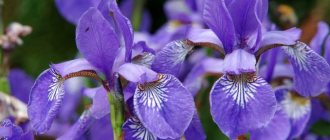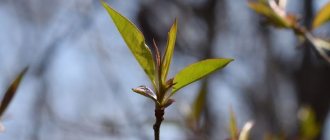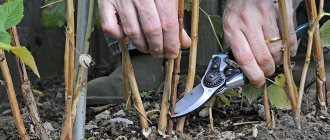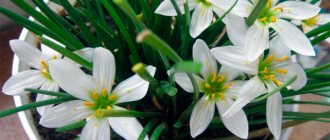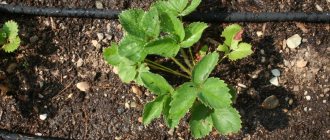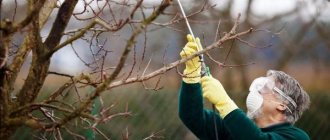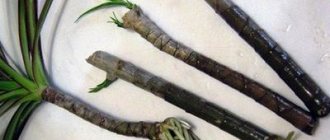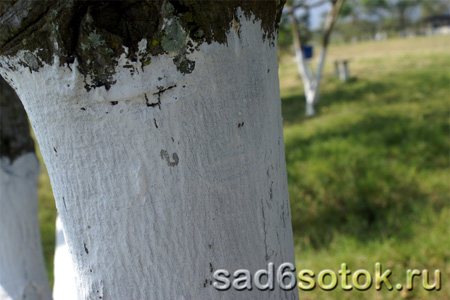
On the large branches and boles of aging trees, layers of cracked and dead bark accumulate. No benefit from it. But harm inadvertently, of course, can do a lot.
All these crevices, cracks and lagging shields of dead bark are a very good place for the accumulation of reserves of infection of various, mainly fungal diseases, and a shelter for the wintering phases (eggs, pupae, larvae, adults) of many pests.
The importance and significance of autumn care
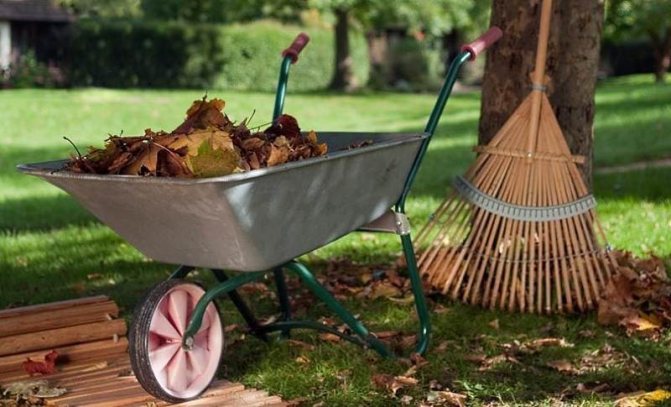

As soon as the last harvest from trees and shrubs has been collected, it is time to start preparing the garden for wintering. It is necessary to carry out a number of important measures that will increase their winter hardiness, namely:
- strengthening the immune system;
- reducing the volume of the branches;
- protection against diseases, pests;
- top dressing;
- watering, digging;
- whitewashing of trees;
- harvesting leaves.
Such procedures allow plants to withstand severe frosts or harsh thaws. If you skip a stage, then in the spring you will have to make up for everything, and this can cause a lack of harvest or the death of a plant.
Don't let it dry
Any living organism, including a plant one, in the process of life, releases so-called dissimilation products, called slags. In humans and animals, they are constantly excreted, and only a small part of them is deposited in tissues. In plants, almost all dissimilation products, with the exception of oxygen and water, are slags. A very small part of them is excreted by the root system. And the bulk is sent to aging foliage. Moreover, it was noticed that the loss of chlorophyll by the foliage, that is, the green pigment, is precisely associated with the accumulation of slag substances in it.
If the foliage is dry or bruised by mites, it turns yellow, turns brown and dries up even before the plant directs a stream of toxins into it. That is, the gardener is faced with the task of preserving the green color of the foliage until a certain time. This is not difficult to do. Dryness is removed by regular irrigation of the crown with fine spray water. Naturally, they do this in the absence of rain and in the evening hours. Regular watering at the root also helps to preserve the leaves.
Formative pruning of crowns is carried out after the foliage has fallen off. Autumn pruning is preferable, since the plant does not need to feed and prepare a large volume of the crown for wintering. 4-5 fruit buds are left on the branch. Slices over 1 cm in diameter are covered with garden varnish, Rannet, green oil paint or red lead. Normally, the branch is cut about 5 mm from the fork, so that the remaining bark will grow over the wound over time. But with autumn pruning, such a low cut contributes to the freezing of unprotected wood. Therefore, in the fall, a stump is left with a length of about 5 cm, and in the spring it is cut off closer to the fork.
Proper care of the garden and vegetable garden in the fall by months
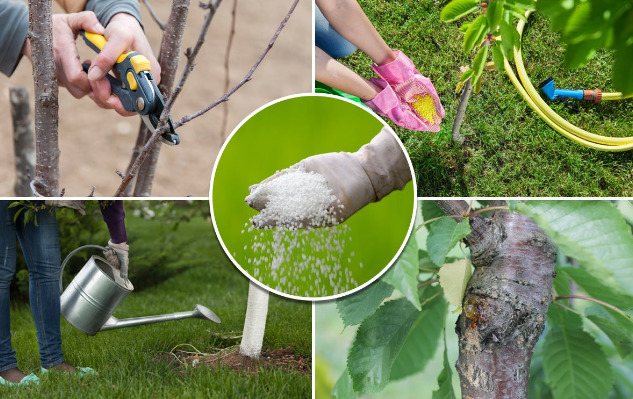

In the fall, caring for fruit trees and a vegetable garden includes certain procedures that are recommended to be done depending on the month. In September, you need to start harvesting, as well as planting fruit trees and shrubs. In October, shoots are cut and removed, as well as tops. In addition, the boles are whitewashed. In November, fallen leaves and cut branches are collected, digging and feeding of each trunk or shrub is carried out.
September where to start
September is considered an important month for any gardener. This month there is an active harvesting from fields, vegetable gardens and orchards. The main activities include:
- Collecting some fruits, namely pears and apples. For long-term storage of fruits, it is important to collect them on time. The optimal period is mid-September. If the fruits are overexposed on the branches, then they will not be stored for a long time.
- Planting fruit crops. It can be apricots, apples, peaches, pears, and it is also possible to plant grapes, gooseberries and currants.
- Pruning fruit trees and bushes. A broken or diseased vine must be removed, and dry branches are also removed. After pruning, it is necessary to process shrubs with trees from various diseases and pests.
- Harvesting the latest vegetable crops. The first frost can negatively affect potatoes or tomatoes.
- Time to plant winter garlic to harvest early spring.
For those who grow flowers, September is a busy month. This month there is an active collection of seeds, planting of bulbs of daffodils, tulips and other various types of flowers.
What to do in October
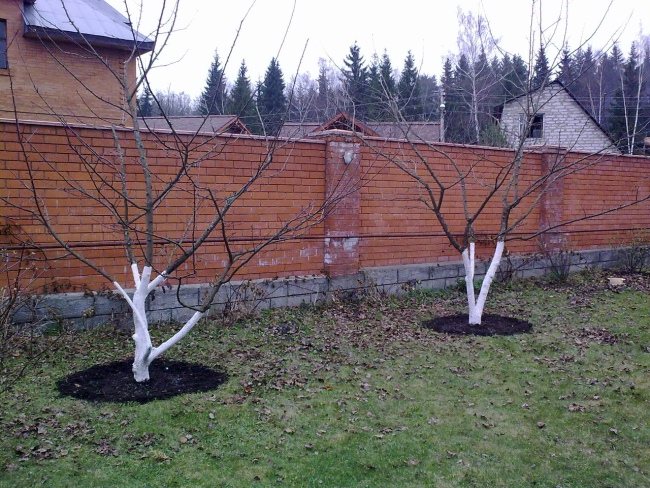

October is the right time for replanting trees and shrubs. It is only necessary to first wait until they drop all their leaves. At this time, you can start collecting late varieties of fruits. There are varieties that are harvested and then set aside for ripening. The next stage is plant feeding, loosening with soil treatment.
Also in October, the siderates are planted. In the southern regions, it is best to plant them in the early days of the month, and for the northern and central regions, planting a crop is not recommended, since the spring crop simply will not grow in time. And rye and winter wheat will ripen and grow well. If the siderates were planted earlier, then in October they can be dug up so that they fill the soil with organic substances.
If the acidity is increased on the site, then this month it can be lowered. This is done by liming with chalk or lime. During this period, flower bulbs can still be planted in the ground. And when the first frost appears, it is necessary to carefully uproot the tubers of begonias, dahlias, queens, gladioli and anemones.
November, preparing the garden for winter
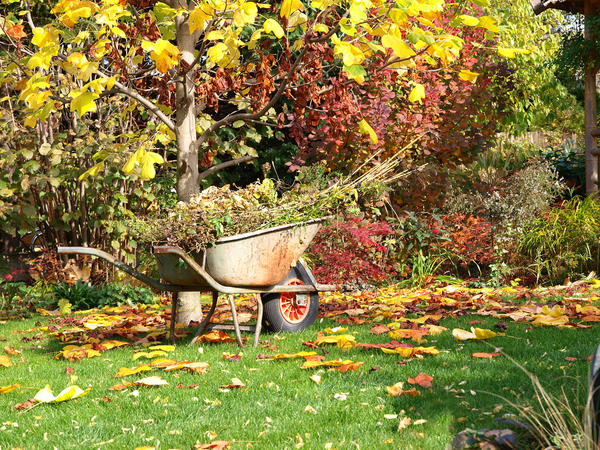

In November, final work is carried out to prepare the vegetable garden and orchard for wintering. First of all, you need to cover some plants. For example, there is a certain grape variety, the vine of which is sheltered for the winter even in the southern regions, where a mild climate prevails.
Interesting!
Before covering the vine, it is important to first make special trenches in the ground or lay pallets of wood. The vines are removed from the supports, placed in a trench or on a pallet, then wrapped in foil or sprinkled with earth.
The trunks of the trees are whitewashed with lime. This is done to keep out the sun's rays in the spring, and to keep out pests and rodents. The sun's rays can burn the bark, causing cracks to form. If the regions are characterized by cold weather, then the fruit trees in the autumn period are insulated with peat and the trunks are wrapped in cloth, which allows air to pass through.
Options for keeping the trunk circle of fruit trees
In fact, there are quite a few options for keeping the tree trunk circle of a fruit tree, here there is black steam (digging), and sodding, and mulching, and each of these activities has both pros and cons. For example, digging the soil in the near-trunk strip and the same mulching can be quite combined, including here also watering and fertilizing, while increasing the efficiency of these agricultural practices.
But without doing anything, you can get nothing too. Usually after reading various sites, the gardener, having weighed all the pros and cons, comes to some kind of consensus.And his physical capabilities help him in this (alas, not everyone has the strength to dig up the trunk circles).
Gardening plan in the fall
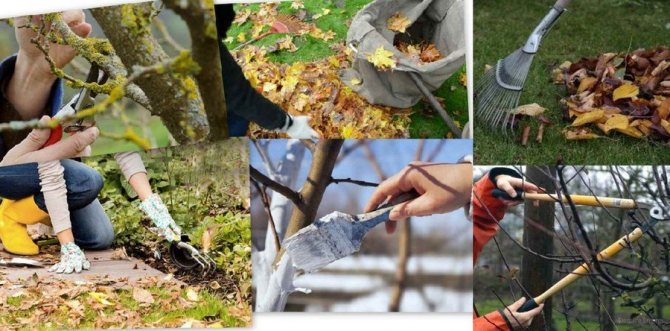

Proper autumn orchard care begins in September and ends two weeks before the first frost. In order not to miss anything, it is recommended to draw up a preliminary plan depending on the region of residence, and based on it, carry out all the relevant activities. The main actions for caring for a garden include:
- a carrion from the ground is collected, pests are destroyed;
- planting young seedlings in October, when there are frequent rains and a significant cooling is felt;
- pruning fruiting plants;
- whitewashing of tree trunks;
- carry out preventive work against fungus and rot;
- processing branches and trunks from insects hidden inside;
- collection of fallen leaves and cut branches, their burning;
- digging in trees;
- feeding and fertilizing plants.
If necessary, the plants are insulated and protected from rodents. Young seedlings should be especially carefully protected, as they are more exposed to the attack of rodents and pests.
Whitewashing of trunks
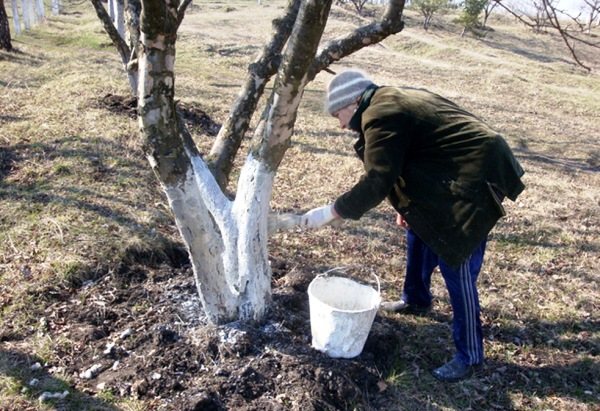

Whitewashing fruit trees in the fall is very important. It protects the plant from:
- From insects that lay their larvae, harm the plant.
- Protection against temperature drops. In the daytime, the bark warms up from the sun's rays, and at night and in the evening it is exposed to severe frosts.
- When the tree has not yet had time to be covered with foliage in the spring, the whitewash protects it from burns.
- Protection against fungal diseases.
Interesting!
The whitewash should be rich and thick. It covers the base of the trunk, and, if possible, the base of the skeletal branches. For young trees, chalk is used instead of lime.
The solution is prepared in several ways. The simplest solution is considered, which includes lime, copper sulfate and water. For 10 liters of water, you will need 2 kg of lime and 400 grams of copper sulfate. A little paste can be added to the solution to increase the viscosity, as well as cow dung or 1 kg of clay.
However, when caring for young trees, it should be remembered that paste is not used to whitewash them. It prevents air from reaching the bark. For young fruit trees, the solution is prepared from 1.5 kg of clay, 3 kg of lime and 1 kg of cow dung. All ingredients dissolve in water.
There is another option - the purchase of a ready-made mixture for whitewashing tree trunks. The mixture can be inexpensive and include clay and lime. However, it is washed off very quickly by rains and will need to be applied several times. But you can buy a more expensive drug - a mixture containing carbolic acid. This will not only allow the whitewash to stay on the trunks for a long time, but also protect against various rodents and hares.
Sanitary pruning
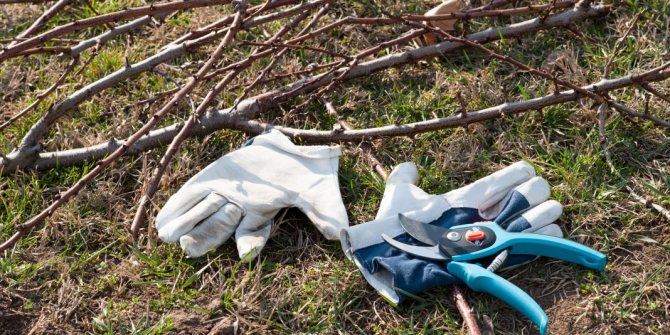

Trees should be pruned at least twice a year - in spring and autumn. In the fall, bushes and trees are pruned before frost, when all the foliage has already fallen. However, do not overdo it, as over-pruning may not benefit, but harm the tree.
The most straightforward pruning involves removing dried out branches or branches that have been affected by the disease. To prevent contamination of other fruit trees and shrubs, such branches are recommended to be burned outside the garden. If the branch is dried up, no harm is done to the tree when it is removed. If it was necessary to cut off a process that is sick, then the cut site must be treated with linseed oil or oil paint, since these branches are considered still alive.
The main goal in this procedure is to improve the flow of air and sunlight along the entire crown. Thanks to sanitary pruning, the correct formation of the crown occurs, since excess branches, and those that grow down or towards the crown, are removed.Those branches that intersect with each other are also subject to removal. To maximize the sun's rays for the tree, branches should be distributed evenly on all sides. Pruning branches is also considered an important procedure. This makes it easy to set the correct growth direction.
Preventive treatment of the garden from diseases
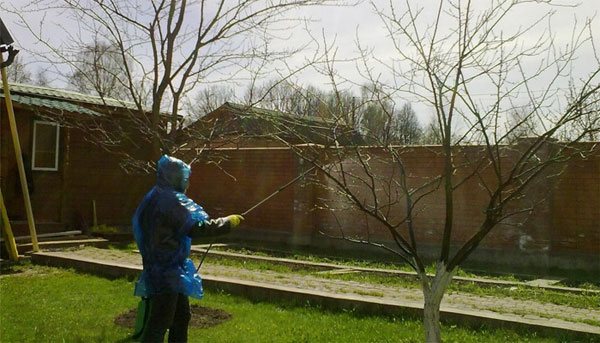

For various diseases, fruit shrubs and trees are treated with special medicinal substances. As a prophylaxis for various spotting, drugs are used that contain copper, a solution of copper sulfate or Bordeaux liquid. Prophylaxis with fungicides such as Topsin is possible. Horus or Cuproxat.
Such medicinal substances as Strobi, Impact or Skor allow you to get rid of the occurrence of rot or scab. If cracks or any other wounds have formed on the bark, then they must be treated with five percent copper sulfate. After processing, they are covered with cement.
With special iron brushes, they clean the branches and trunks of dead bark, since the larvae of apple moth, silkworm and other insects hide in it.
Autumn feeding
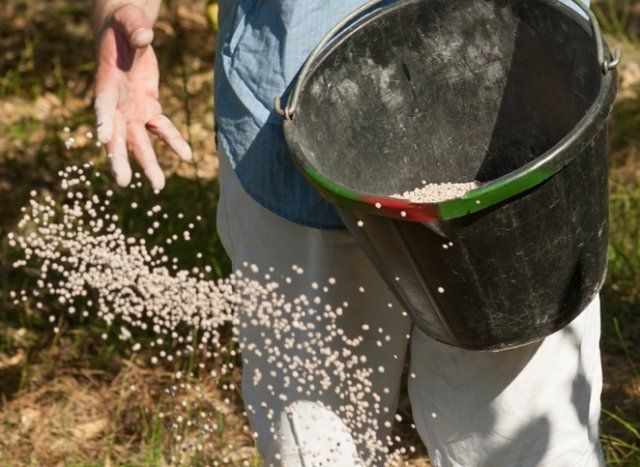

Autumn care for adults and young trees also includes top dressing. It is very important, as it provides the plant with high immunity, due to which it will be able to withstand severe frosts and increase fruiting in the new season. Top dressing is applied at the moment when the trunks are being dug in.
There are two types of fertilizers in the fall:
- Humus.
- Phosphate-potassium fertilizers.
Humus is added depending on the age of the tree. If he is less than 8 years old, then 30 kg of humus is enough, if older, then from 50 kg. By spring, the substance will have time to overheat and the plant will receive the necessary portion of the nitrogen supplement.
Interesting!
Nitrogen activates the movement of sap in the plant, which violates its winter hardiness. Therefore, it is recommended to apply nitrogen fertilizers not in autumn, but in spring or summer.
Monopotassium phosphate is considered a popular phosphorus-potassium fertilizer. It is composed of 34% potassium and 54% phosphorus. This drug is absorbed by the whole plant. However, it is expensive, so it is recommended to apply it to very whimsical crops.
Potassium preparations include chloride and potassium sulfate. It is better not to treat bushes with potassium chloride, as it is capable of oppressing them. Potassium chloride does not cause a negative result on trees. Potassium sulfate is suitable for feeding both trees and bushes. For one square meter, it needs from 5 to 10 grams.
Ammophos and superphosphate are considered popular phosphate fertilizers. Superphosphate is more preferable for autumn feeding, since nitrogen is present in ammophos.
Features of caring for seedlings of fruit trees in autumn
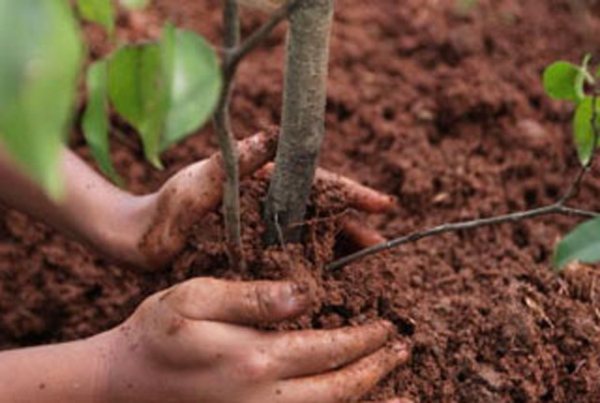

Care for young trees after planting consists in mulching the soil and tying to a support (stake). To avoid damage to the root system, digging is carried out carefully to a maximum depth of 15 cm.
The young bark of seedlings is very attractive to mice and hares. To protect a young plant from attack, you need to hide the bark of the tree under a special covering material. A simple mesh with small cells can be used as a covering material. You can also use regular synthetic stockings and tights.
Protecting the garden from insects
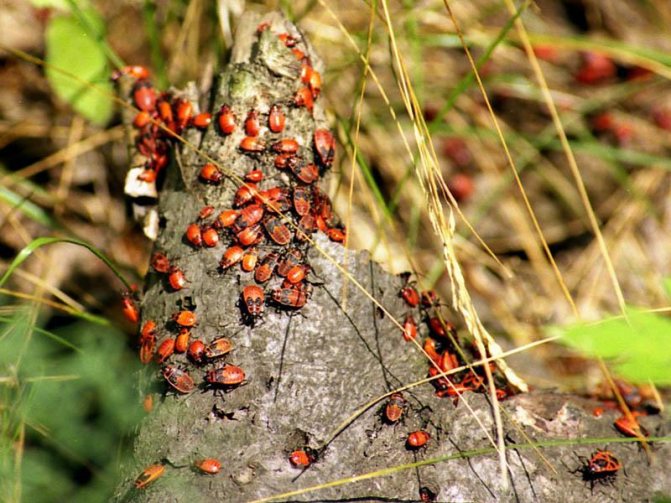

The bark of the tree serves as a comfortable place for overwintering a variety of insects. They can lay their larvae in the bark, in the nests of the crown, as well as in fallen leaves. To protect your garden from insects, you must do the following:
- Clearing foliage and other debris from the entire garden. Use a special iron brush to clean the bark of the tree. And to destroy the wintering of caterpillars in the soil, dig up the soil 15 cm deep.
- It is good to inspect all the plants. Cracks and abrasions in the bark of trees should be treated with 5% copper sulfate and lubricated with cement.
- Spray the garden with a solution of urea (3 or 5%), as well as preparations that contain copper.
These manipulations will protect the garden from such popular insects as the stalk, silkworm, aphid or lungwort.
Protecting the garden from rodents
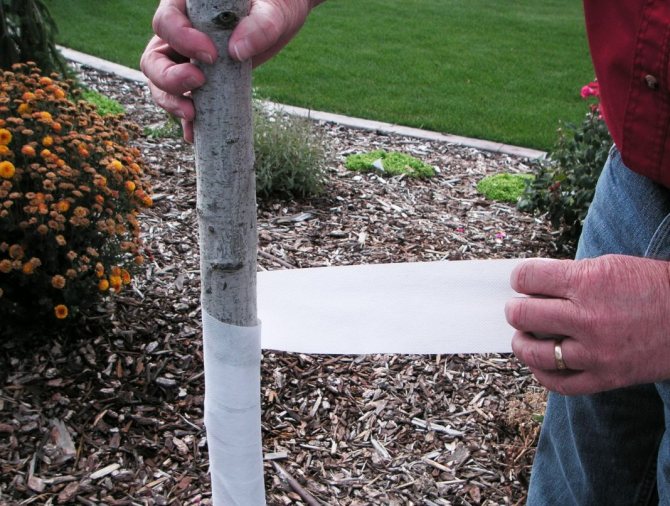

Garden trees and shrubs are very easily attacked by various small rodents and hares. For protective purposes, the trunk is wrapped in cloth. For example, it can be burlap or old rags with roofing felt.
Interesting!
In order for the tree not to stifle, when wrapping it with matter, burlap or rags are placed under the roofing material.
And so that mice do not get to the trunk, the matter that covers the tree must be well buried with earth at the base. The garden can also be protected from small rodents with the help of pine or spruce branches. They are placed in the periosteal circle and the trunk is tied. Mice can also be scared away by sprigs of coriander. If they are scattered near a tree, then mice may be intimidated by their smell.
Watering garden trees
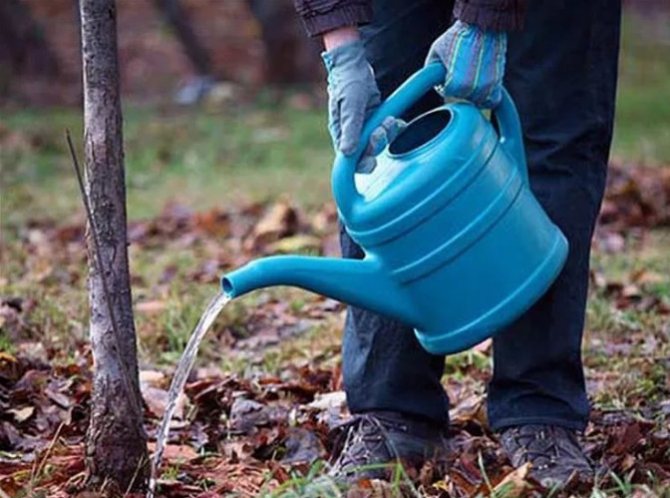

Before wintering, it is recommended to water the garden only in those regions where there is little rainfall. With normal humidity in the region, watering is recommended in October, but not later.
Watering in the fall, together with earthing up the base of the plant, instead of benefit, can harm the tree. Therefore, hilling of trees is allowed only in regions where there is little snow and severe frosts.
The last watering before winter charges the tree with moisture and strengthens its root system. In winter, the roots are able to receive moisture from a depth of 1.5-2 meters. In addition, watering before wintering improves the growing season, replaces watering in the spring, and also protects the tree from sunburn.
When watering, it is important to remember that excess moisture is just as dangerous as lack of moisture. If the tree does not have enough moisture, then it will not be able to develop immunity to severe frosts. On average, 10 to 16 winds of water are enough for one square meter.
Digging a tree
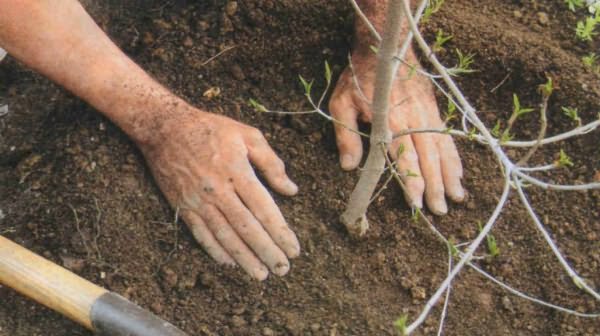

Asking the question: is it necessary to dig trees in the fall, inexperienced gardeners believe that this can be transferred to the spring. However, the autumn digging is irreplaceable and very important. With its help, the larvae of harmful and dangerous pests die, the soil is saturated with oxygen, and the seeds and roots of various weeds are decomposed.
Digging must be done no later than October. The root system of young seedlings is shallow, so deep digging is not recommended for them. The location of the root system depends on the variety of the fruit tree. For example, in an apple tree, the roots are in a radius of 20 to 60 cm around the trunk, in a plum - from 20 to 40 cm.
In order to prevent the ground from frosting over and weathering, it is necessary to dig in fruit trees carefully and not break large lumps of earth. Digging up the ground in late autumn is also not recommended, since early snow will not allow the ground to warm up well and quickly in the spring.
Harvesting leaves
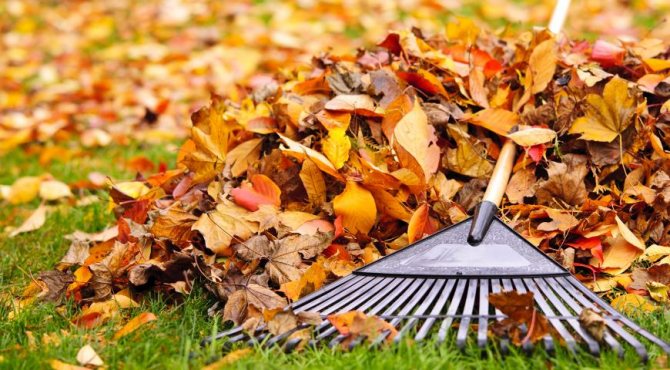

In the fall, when caring for fruit trees, it is also important to do leaf harvesting. Various insect or pest larvae hide in the leaves for the winter, and the remnants of disease spores are also possible. This must be taken into account when cleaning the garden.
If the site has not been exposed to various diseases, and pests have not attacked it, then fallen leaves can serve as a good fertilizer. To do this, you need to collect all the foliage in bags, and in the spring pour it into one heap for rotting. During the winter, all harmful microorganisms, if they remain in the foliage, die in frost. If fallen leaves are susceptible to attacks by pests and various diseases, then such foliage should be collected and burned.
The best fertilizer
Of course, a garden in the fall takes a lot of time, cultivating the soil and tree trunks. You can prepare the fertilizer yourself. Many people believe that the main task of gardening in the fall is to remove fallen leaves.Summer residents usually rake them into heaps and burn them. This is the biggest mistake. Why burn or throw away life-giving substances, and then buy fertilizers separately if you can make them yourself? We suggest that you act rationally and not spend extra money in order to fertilize the garden in the fall. Wait until all the foliage has fallen, then walk over it with a lawn mower to chop it up well. Further, around each tree, carefully, without damaging the root system, we make small holes. Experts recommend shoveling crushed leaves into them. All of this will start to decompose quickly. Our small leaves will make an excellent organic soil additive. Thus, you will still carry out mulching and insulate the tree roots for the winter. These are the triple benefits for your garden!
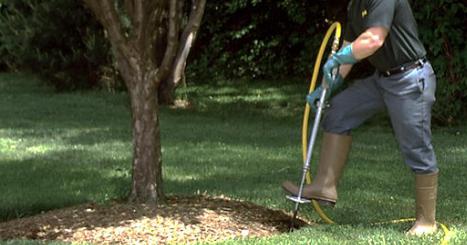

Tips for Beginners
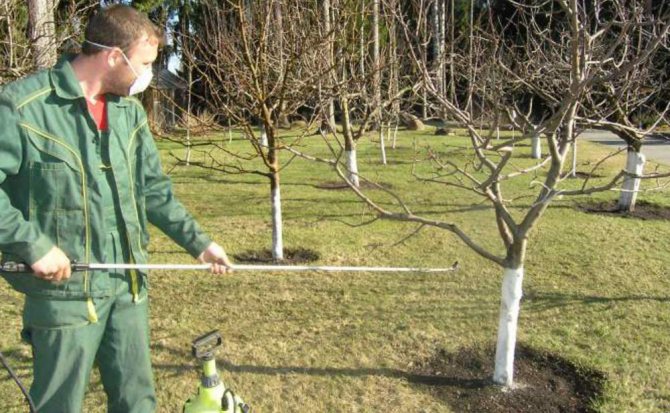

There are some helpful tips for budding gardeners. With their help, you can grow a good harvest next year, without harming the garden. As a rule, at the end of August, most of the shoots in the garden stop growing and an end bud is formed. For the rapid formation of flower buds, top dressing and periodic watering are recommended.
The main actions when caring for a garden are:
- Supports for trees. If the harvest turned out to be generous and rich, then you should take care to protect the branches from damage from heavy fruits. For this, special supports are being built.
- Top dressing. To protect the orchard from frost, you need to apply phosphorus-potassium fertilizers in the fall. They increase the plant's immune system and increase its hardiness.
- Whitewashing of trunks. It protects against diseases as well as pests. In addition, it prevents the bark from getting sunburned.
- Removal of dead and dried branches.
Do not forget about protection from various diseases, from pests and rodents that attack the garden.
Harvest
Autumn work should begin with harvesting. There should not be a single apple or berry left on trees and bushes. The remaining fruits contribute to the preservation and spread of pests and diseases. If all the good things have long been eaten, and the remaining gifts of the garden are clearly not suitable for food, they should be collected and disposed of. You can burn them or bury them in a hole. Do not leave apples under trees or throw them into a hole behind a fence. This is tantamount to leaving them on the branches.
Do not delay cleaning. Autumn varieties of apples and pears are harvested in the first half of September.
Late autumn and winter - late September or early October. Remaining unharvested for a long time, the fruits not only lose their taste, but also do not allow the tree to fully prepare for winter.
Whitewashing of trunks
Whitewashing of trunks is carried out after removing mosses and lichens, after stripping the bark and trimming dry branches.
Whitewashing has several purposes:
- To prevent cracking of the trunks, which occurs during the extremes of day and night frosts;
- Protects from sunburn;
- Prevents pests from hiding under the bark for wintering;
- Whitewashed apple trees nibble less mice and hares.
For whitewashing, choose a dry day. If it rains right after the procedure, it will wash off all the paint. It takes several hours to dry.
Pour over
Why is it needed. It is the water that carries the nutrients to the plants that help them survive the harsh winters. Therefore, it is imperative to carry out water charging in the garden.
How to do it. They do it in October when the leaves fall. At this time, the soil must be soaked to a depth of 40-60 cm.To achieve this, it is necessary to pour under each plant: on sandy soils - 4 - 5 buckets of water, on loams - 6 - 7, on clay soils - 8 - 9.
Moisture-charging irrigation must be done without fail, even if it rains!
Removing tops from trees during autumn pruning
Tops are strong, fattening shoots with large leaves and underdeveloped buds.Most often they form on old skeletal branches. Usually tops grow out of dormant buds, starting to actively develop. Why are tops so dangerous? They take strength from a tree, thicken its crown, and fruits are never tied on them.
Spinning tops grow on a young fruit crop after the tree has been damaged. For example, you cut a large branch or it broke by itself. Older fruit trees may have fattening shoots after pruning. Excessive nitrogen fertilization and abundant watering can also provoke the growth of tops.
Red arrows indicate spinning tops
You can get rid of tops by pruning. Its purpose in this case is not only to thin out and lighten the crown of the tree, but also to form new young shoots, direct them along such a trajectory so that they do not thicken the crown. It is necessary to remove the fatty branches inside the crown on the ring. After cutting the tops, the wounds on the tree should be treated with garden varnish.
Remember to clean tree wounds after tops are removed.
Apple tree time
Autumn, and especially September, is a great time to plant apple trees. While you are harvesting fruits from already fruiting trees, you can completely acquire new varieties. During the time that they will have before flowering, their root system will have time to strengthen, and the seedlings will receive everything they need from the ground. For the apple tree, you need to prepare not just some kind of hole, but a quite spacious recess, in which everything that is necessary for the good growth and development of a young apple tree will be laid.
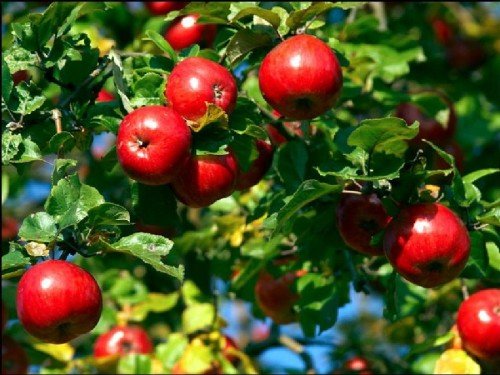

In order for the tree to receive good support during a difficult period, place fertile soil in the hole, which will combine rotted manure, compost, peat, which must be sprinkled with mineral fertilizer and mixed well. The hole must be sprinkled on top with a slide, since the soil will surely settle. After that, a hole is made at the bottom, where the tree will be planted, after which it is sprinkled with earth and watered well. Do not spare water - the best time for any plant when it needs to be saturated with water as much as possible is planting time. When the water is absorbed, it remains only to trample the ground around the seedling and rejoice at the work done.
Garden treatment with drugs
Black, gray or red spots on foliage indicate fungal attack. Es / and there are few such leaves, they are picked by hand. Otherwise, the crown is treated with fungicidal preparations.
The fight against insects and ticks is carried out using special pesticide preparations. You just need to remember that insecticides - poisons for controlling insects - do not destroy ticks, for which acaricides should be used.
On the labels, the classification of the drug is written in small print somewhere near the commercial name or active substance. Important: drugs with different sonorous commercial names may contain the same active ingredient.
If the pesticide preparation is of the class of insectoacaricides, then it is simultaneously effective in the fight against insects and ticks. If different insecticidal and acaricidal preparations are used, they should not be mixed. Better to spread their application for 1-2 days.
Plants should be processed in the evening in dry weather. Green soap or other saponifier must be added to the working solution, which contributes to good wetting of surfaces. Processing should be carried out after harvesting until the first night frosts at intervals of 1 every 2 weeks.
Useful video:
Watch the video on how to deal with moss on fruit trees:
How to save tree bark. Autumn cure:
Moss and lichens are removed after leaves fall. Well proven two ways:
- The trunk of the tree is treated with iron vitriol. To do this, 300 grams are diluted in 10 liters of water. They process trunks, branches and the ground under the tree.After 10 days, the lichens die off. They are brushed off with a stiff brush. Spread a cloth under the apple tree so that crumbling spores do not fall on the ground.
- Moss and lichen are first cleaned from the trunk, and then they are processed with copper sulfate. 500 grams of powder is diluted in a bucket of water. The earth in the near-trunk circle is also sprayed.
The video will tell you how to use iron vitriol:
Once every 3-4 years in the fall it is necessary to clean the old bark from the trunkseven if there are no lichens on it.
The bark is cleaned with a scraper or a stiff brush. The ground under the tree is covered with a cloth so that pieces of bark do not remain on the ground.
The fallen particles of the bark are burned.

